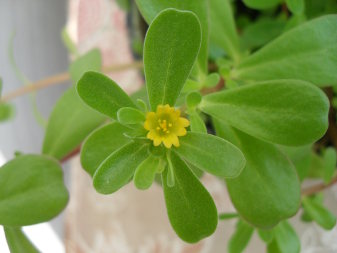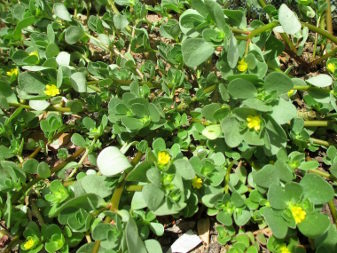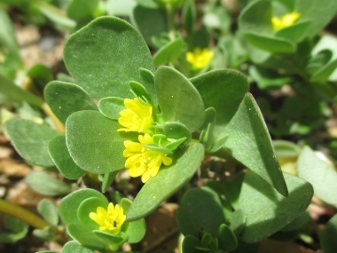



Purslane (Portulaca oleracea), fam. Portulacaceae.
Sometimes grows as a weed, including seemingly the places most unsuitable for growth, like asphalt cracks, and spaces below the housewalls. Its appearance is similar to common knotweed, but differs with larger and succulent leaves. Tiny yellow flowers are not easy to notice, since each of them lives during few hours in the morning only.
Purslane is edible, but its taste is not very pleasant, sour and slimy. From ancient times it is used in Mediterranean cuisine (maybe, the cultural varietis have better taste?) It contains a rich set of minerals, vitamins (particularly B2, C, E, and carotene), and linolenic (omega-3) fatty acid. Unfortunately, it is also high in oxalates, which are harmful in excess. Purslane has antiinflammatory, antiparasitic action; it increases arterial pressure, but decreases blood sugar and cholesterol.
As an ornamental plant, Moss-rose Purslane (Portulaca grandiflora) is also grown.